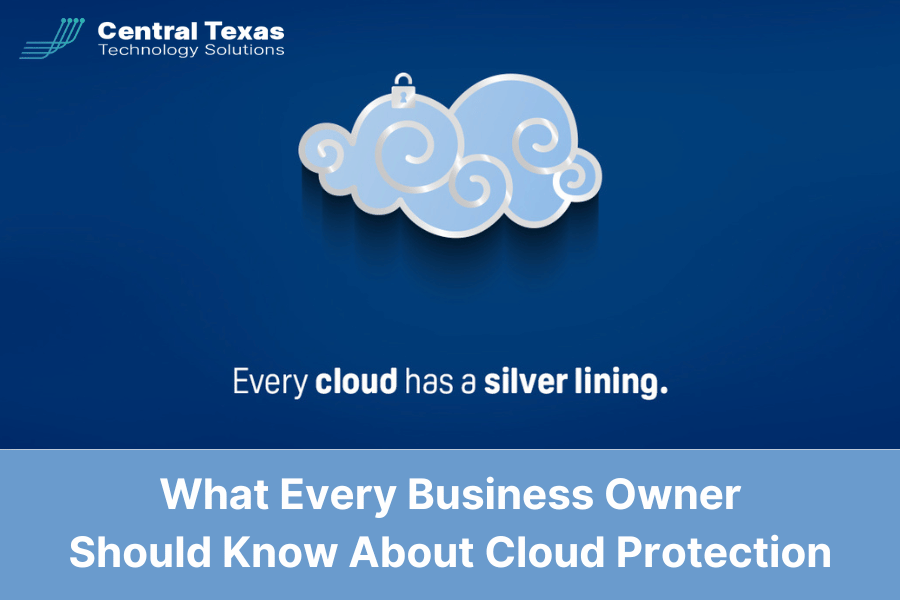
Running a business today without using the cloud is a bit like trying to compete in Formula 1 with a tricycle. The cloud gives us flexibility, scalability, and efficiency we could only dream of a few years ago. But—like a lot of good things—it also comes with risks that many business owners either don’t realize or mistakenly think someone else is handling.
Here’s the reality: cloud protection isn’t just your provider’s job. It’s a shared responsibility. And in 2025, with cyberattacks growing faster than AI-generated deepfakes, understanding your role has never been more important.
The Biggest Myth About Cloud Security
There’s a dangerous myth out there: “Once my data is in the cloud, it’s safe.”
I wish it were that easy. The truth is, cloud providers like Microsoft, Amazon, and Google are responsible for securing the foundation—the infrastructure, servers, and networks. But your data, your applications, your user access? That’s firmly on you.
Think of it like renting a high-end office suite. The building provides locks, security guards, and maybe even a fancy coffee bar. But if you leave your office door wide open with your files spread out on the conference table, well… that’s not their fault.
Your Role in Cloud Protection
If you’re not actively managing your part of the cloud, you might be leaving the front door wide open without realizing it. Here’s where most businesses need to pay attention:
-
Your Data: Encrypt it. Protect it. Back it up somewhere other than the same cloud it’s stored in. (And yes, that still matters even if you “trust the brand.”)
-
Your Applications: Keep your Microsoft 365, Google Workspace, and other tools updated. Monitor who’s logging in, from where, and why. If you wouldn’t let a stranger walk into your office and use your desk, don’t let unknown devices connect to your cloud apps.
-
Your User Credentials: Password123 isn’t a strategy. Strong passwords, multi-factor authentication (MFA), and limited access rights are your best friends.
-
Your Configurations: Misconfigured cloud settings are one of the biggest causes of breaches today. Make sure your storage isn’t “accidentally public,” your alerts are turned on, and your old employee access is cleaned up faster than leftover office birthday cake.
The Good News: You Don’t Have to Figure This Out Alone
A strong cloud protection strategy doesn’t have to be complicated or expensive. You just need a partner who knows what they’re doing and cares about your business like it’s their own.
That’s where CTTS comes in. We work with CEOs and business owners across Central Texas every day to:
-
Identify gaps in your current cloud environment
-
Implement the right security practices tailored to your needs
-
Monitor and manage your cloud so you can focus on growing your business (and maybe getting that round of golf in once in a while)
When you know exactly where your responsibilities begin and end, you take back control. You don’t just “hope” you’re protected—you know you are.
Let’s Get Your Cloud Strategy Locked Down
The worst time to find out you have a security gap is after an attack. (Kind of like realizing you forgot to pack the sunscreen once you’re already burnt to a crisp at the beach.)
Let’s fix it before it becomes a problem. Schedule a free, no-obligation cloud security review with CTTS today.
We’ll make it simple, clear, and actionable—because protecting your business shouldn’t be rocket science.
👉 Call (512) 388-5559 or visit CTTSonline.com to schedule your review.
Frequently Asked Questions About Cloud Protection
1. Who is responsible for cloud security—me or the cloud provider?
Both are. Cloud providers secure the infrastructure, but you’re responsible for your data, applications, access controls, and configurations. It’s a shared responsibility model.
2. What are the most common mistakes businesses make with cloud security?
Some of the most common missteps include using weak passwords, not enabling multi-factor authentication, failing to back up data separately, and leaving cloud storage or user access settings misconfigured.
3. How can CTTS help improve my cloud protection strategy?
CTTS identifies weaknesses in your cloud setup, implements best practices for securing your apps and data, and provides ongoing monitoring and management—so you can stay focused on running your business.
Contact CTTS today for IT support and managed services in Austin, TX. Let us handle your IT so you can focus on growing your business. Visit CTTSonline.com or call us at (512) 388-5559 to get started!
